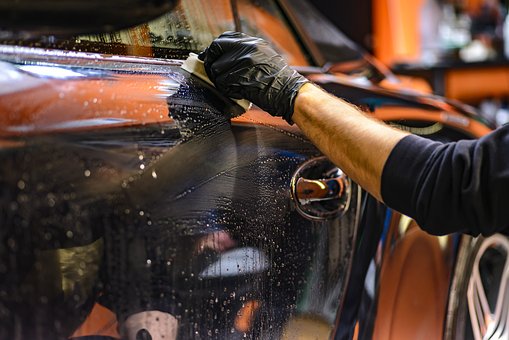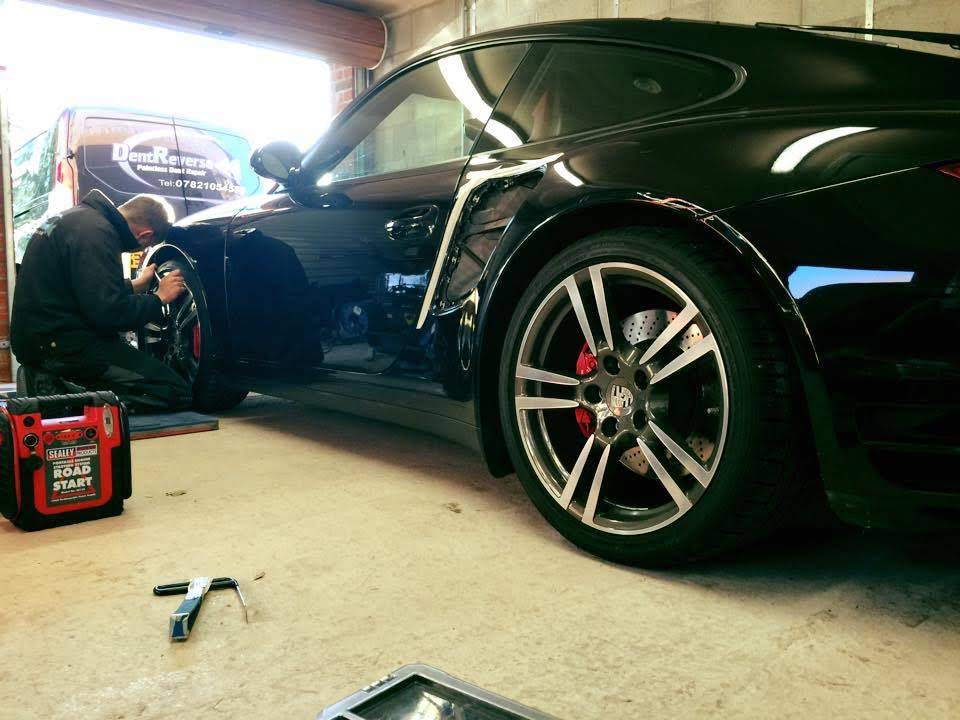Paintless Dent Repair (PDR) is a technique that has transformed the vehicle repair industry, offering a swift and effective way to remove dents without compromising the original paintwork. Whether caused by a minor accident, a rogue shopping trolley, or a hailstorm, dents can now be repaired with minimal fuss. We delve into how PDR works, its benefits, the tools involved, and how long you can expect the process to take.
The Paintless Dent Repair Process
PDR works by meticulously reshaping the damaged area of a vehicle’s bodywork without the need for sanding, filling, or repainting. The process is as much an art as it is a science, requiring skilled technicians to carefully massage the dented metal back to its original form. Here’s how it typically works:
Assessment: The technician first inspects the dent to determine if PDR is suitable. Factors considered include the size, depth, and location of the dent, as well as the condition of the paintwork. PDR is most effective on shallow dents where the paint is still intact.
Accessing the Dent: For PDR to be effective, the technician needs access to the back of the dent. This may involve removing interior panels, lights, or other components to reach the underside of the dented panel.
Slow and Precise Manipulation: Using specialised tools, the technician applies gentle pressure from behind the dent, carefully pushing and massaging the metal back into its original position. This process requires a steady hand and a keen eye to ensure the metal is repaired without creating high spots or further damage.
Final Inspection: Once the dent is repaired, the technician will closely inspect the area to ensure the repair is flawless, often using reflective lights or boards to check for any remaining imperfections.

How Long Does Paintless Dent Repair Take?
One of the significant advantages of Paintless Dent Repair is its speed. Traditional dent repair methods can take several days, especially if repainting is required. In contrast, PDR is typically much quicker, with many repairs completed within a few hours.
Minor Dents: Small dents, such as those caused by door dings or hailstones, can often be repaired in under an hour. This quick turnaround is especially convenient for minor repairs where you can wait while the work is done.
Moderate Dents: Dents that are slightly larger or more complex, such as those on body lines or creased areas, may take a couple of hours to fix. The technician needs to ensure the metal is perfectly smooth, which may require additional time.
Large or Multiple Dents: Larger dents, or multiple dents spread across different panels, can take several hours to repair. However, even with these more complex cases, PDR is usually faster than traditional methods, meaning you’re not without your vehicle for long.
What Tools Are Used in Paintless Dent Removal?
Paintless Dent Repair requires a variety of specialised tools, each designed for different aspects of the repair process. These tools are essential for the precise manipulation of the vehicle’s metal panels. Here’s a closer look at some of the key tools used:
Dent Removal Rods: These rods come in different shapes, sizes, and flexibilities to suit various types of dents and vehicle panels. The technician uses these rods to apply pressure from behind the dent, carefully pushing the metal back into place. Some rods are straight, while others have curved or angled ends to reach difficult areas.
Dent Lifter or Puller: For dents that are more accessible from the outside, a dent lifter or puller is used. This tool works by attaching a suction cup or glue tab to the centre of the dent and then pulling it outward. It’s particularly effective for larger, shallow dents.
Glue Pulling Kits: When access to the back of a dent is limited, glue pulling techniques are employed. Special glue is applied to a tab, which is then attached to the dent. Once the glue sets, a pulling tool is used to gradually lift the dent. After the repair, the glue is removed without damaging the paint.
Tap Down Tools: Sometimes, the metal may need to be gently tapped down to smooth out any high spots created during the repair process. These tools have soft tips to avoid damaging the paint and are used to refine the final surface.
LED Line Board or Reflector Board: This tool helps the technician see the contours of the dent and the surrounding area clearly. The board’s lines reflect off the car’s surface, highlighting any imperfections. This is crucial for ensuring the repair is perfect, with no remaining ripples or distortions.

Benefits of Paintless Dent Repair
PDR offers several advantages over traditional dent repair methods:
CostEffective: Because PDR doesn’t require painting or the use of fillers, it’s generally less expensive than conventional repairs. This is particularly true for smaller dents where the repair can be done quickly.
Maintains Vehicle Value: Since PDR preserves the original paintwork, the vehicle’s value is better maintained. Repainting, especially when done poorly, can reduce a vehicle’s resale value.
Environmentally Friendly: PDR is a green repair method, as it doesn’t involve chemicals, fillers, or paints that can harm the environment.
Quick Turnaround: As mentioned, PDR is much faster than traditional methods, meaning less downtime for your vehicle.
When is Paintless Dent Repair Not Suitable?
While PDR is highly effective, it’s not suitable for every dent. Situations where PDR may not be the best option include:
Deep Dents with Cracked or Chipped Paint: If the paint is damaged, PDR might not be sufficient, as the area may need to be repainted after the dent is removed.
Sharp Dents or Severe Creases: Dents with sharp edges or severe creasing may be too complex for PDR, requiring more extensive bodywork.
Dents on Panel Edges: Dents located on the edges of panels can be difficult to repair with PDR due to limited access and the rigidity of the metal in these areas.
Paintless Dent Repair is an efficient, cost-effective, and environmentally friendly way to restore your vehicle’s appearance. With the right tools and expertise, many dents can be removed quickly, keeping your car looking as good as new without the need for expensive and time-consuming traditional repairs. Whether you’ve got a small ding or a larger dent, PDR offers a solution that preserves your vehicle’s original finish and value.
If you are looking for paintless dent repair on your vehicle, then our service covers most areas across the West Midlands, including Birmingham, Solihull, Derby, and Sutton Coldfield. For more information, get in touch.
- Why You Should Always Fix Dents on Your Car - April 4, 2025
- How to Avoid Common Winter Car Dents - December 13, 2024
- How Does Paintless Dent Repair Work? - September 12, 2024

